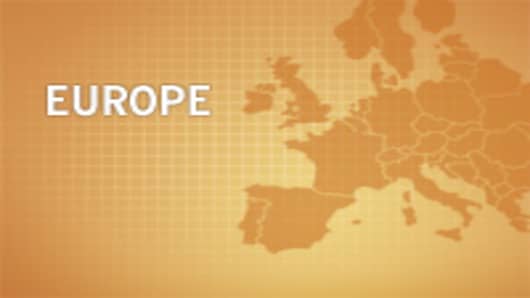Plans for the creation of a European Monetary Fund have been gaining momentum as the debt crisis in Europe continues. But how would a European IMF work?
The idea germinated at the Centre for European Policy Studies (CEPS) and Daniel Gros, a former economic advisor to Nicolas Sarkozy and current director of CEPS, is one of its creators.
"Given the intense pressure from financial markets, it is likely that in some cases a tough fiscal adjustment program might not be enough to avoid a 'sudden stop' of necessary external funding of the public sector," Gros wrote in a paper that presented the fund to European leaders for the first time a month ago.
The creation of an EMF has become the theme of a number of bilateral meetings between European Finance ministers, especially because some of them believe that calling the International Monetary fund to help Greece will only magnify the euro zone problem, giving the outside world ammunition to say the euro is out of control and not even other euro group countries can help.
Gros and his colleagues propose a security fund paid by those who don't meet the Maastricht treaty criteria.
"Countries that might in future constitute a burden on the Community should contribute to building up the resources needed for a potential support effort," he said. Especially in the euro area where problems in any country are bound to have a spillover effect for its partners.
Only countries breaching rules like the 3 percent of GDP as budget deficit every year or no more than 60 percent of GDP as sovereign debt would have to pay. And the contribution rates would be calculated on the following bases:
- 1 percent annually of the stock of "'excess debt," which is defined as the difference between the actual level of public debt and the 60 percent of GDP. Greece, for example, with a debt-to-GDP ratio of 115 percent, would have to contribute 0.55 percent of GDP.
- 1 percent of the excessive deficit, or the amount of the deficit for a given year that exceeds the Maastricht limit of 3 percent of GDP. Again, for Greece, the deficit of 13 percent of GDP would mean a contribution to the EMF equal to 0,10 percent of GDP.
In this case, the total contribution for Greece in 2009 would have been 0.65 percent of GDP.
"Countries with exceptionally strong public finances would not need to contribute because they would de facto carry the burden should a crisis materialize," Gros said in the paper.
Those thinking that taxing countries under fiscal stress would only aggravate their problems should keep in mind that most of the contributions would materialize a long time before solvency problems become acute. This means that Greece, and other euro-zone countries would actually have had to make contributions continuously over the last decade, well before the recent turbulences.
If that had been done, the EMF at this point would have been able to accumulate 120 billion euros in reserves since the launch of the euro: enough to rescue any small-to-medium-sized euro area member state.
The EMF doesn't offer a quick fix for Greece. But since the euro is a very young currency, these issues with Greece, Portugal, Ireland and others need to be addressed and a lesson needs to be learned, otherwise the euro could lose its strength.
"We see two key advantages of our proposal: first, the funding of the EMF should give clear incentives for countries to keep their fiscal house in order at all times. Secondly, and perhaps even more important, the EMF could provide for an orderly sovereign bankruptcy procedure that minimizes the disruption resulting from a default," Gros said.


